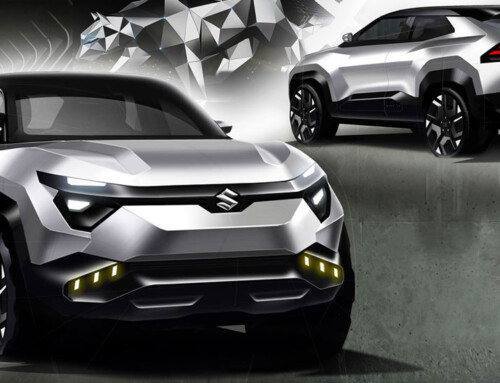The Mercedes-Benz F200 Imagination is an extraordinary automobile, but not at all for the usual reasons. Its body is conservatively elegant, no doubt providing us a discreet peek at the future S-class coupe, but it breaks no new ground stylistically. The door and trunk openings are ingenious and practical, but we have seen their like before, on Lamborghinis and the SLK respectively.
The reinterpretation of the classic radiator shell form with perforations in a sheet of metal, rather than horizontal and vertical bars to let cooling air pass has already been incorporated on the SLK concept car.
The low aerodynamic drag coefficient, 0.28, is admirable, but not in any way unusual these days. Even the underbody flap at the back that trims lift has been seen on Mitsubishi sports cars. The show car’s paint is intriguing, but again we have seen color-shifting paints before.
The true value of the F200 lies in the fact that it is the first actual prototype of the car of the Twenty-first Century. Whether we want to admit it or not, the intellectual concept “car” is changing from a mechanical construct with a few electronic elements into an electronic construct embodying the fewest mechanical parts possible.
In fact, the car of the future will be a computer with wheels, just as the airliner of the present and near future is essentially a computer with wings. And engines, of course. The F200 is the automotive equivalent of the Airbus A 340, a complex device in which the human operator does not directly effect control, but instead asks computers to interpret his or her wishes to the active elements that direct the path of the machine.
The control systems of the Airbus, or of the F-16 fighter plane, have earned the name “fly by wire”, meaning electrical wire carrying impluses of current, not the braided steel wires attaching control stick to ailerons, as in countless generations of earlier aircraft. Mercedes has brought “drive by wire” to fruition in this concept car, and in so doing has distinguished itself yet again, not for having initiated a concept, but for having reduced it to acceptable practice.
You may say that one concept car is not yet proof, but bear in mind that Mercedes announced a new line of trucks in September 1996 that relies entirely upon electronics for “braking by wire”, so it is evident that the company has satisfied itself that electronic mediation of driver control inputs is completely reliable.
The key element in drive by wire is that the steering wheel has been eliminated, and with it the always-dangerous and difficult-to- accomodate steering column. Steering inputs are reduced to lateral motions of a pair of levers, one on the central console, one in the door.
For those who think that it is impossible to control a car unless you turn a giant wheel through three or four turns, one must ask the question, how is it that even children can control a bicycle with absolutely direct steering, yet you insist that there must be great demultiplication in car steering? Tests at the fascinating Mercedes driving simulator in Berlin showed that people who had never driven a car before were able to steer a Mercedes with great precision. And so were drivers with decades of ingrained habits.
The article continues in Auto & Design no. 100










